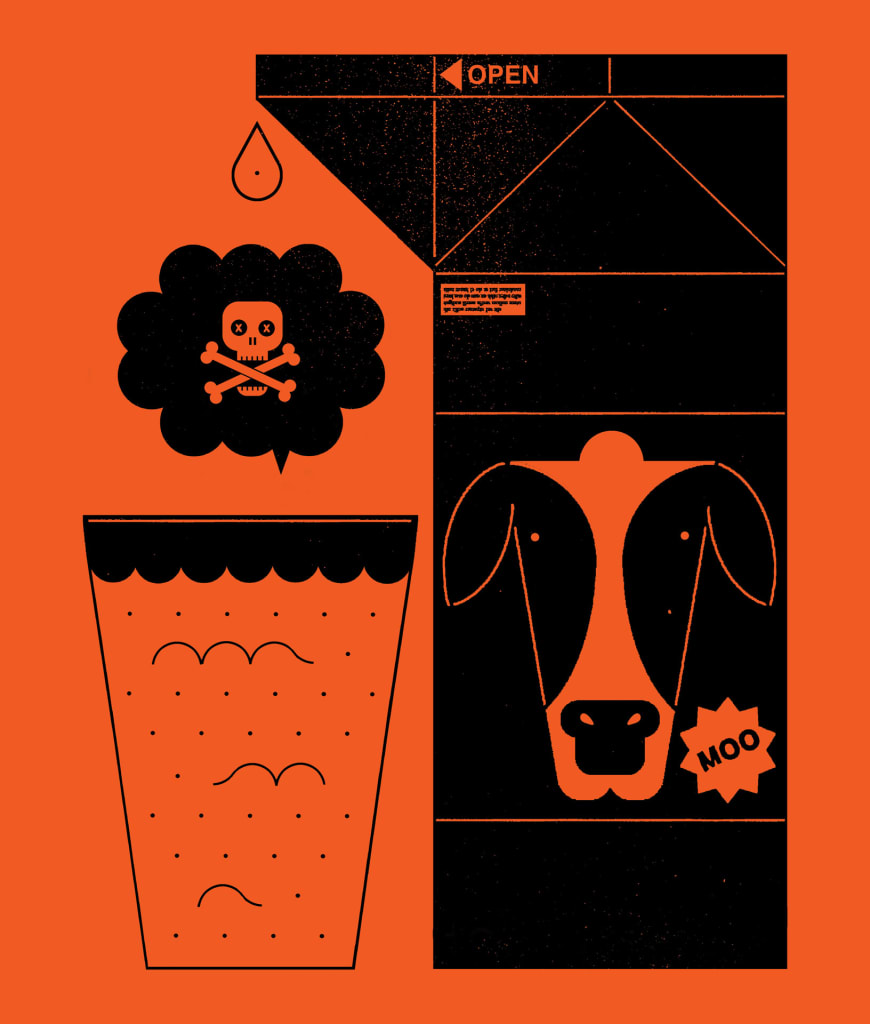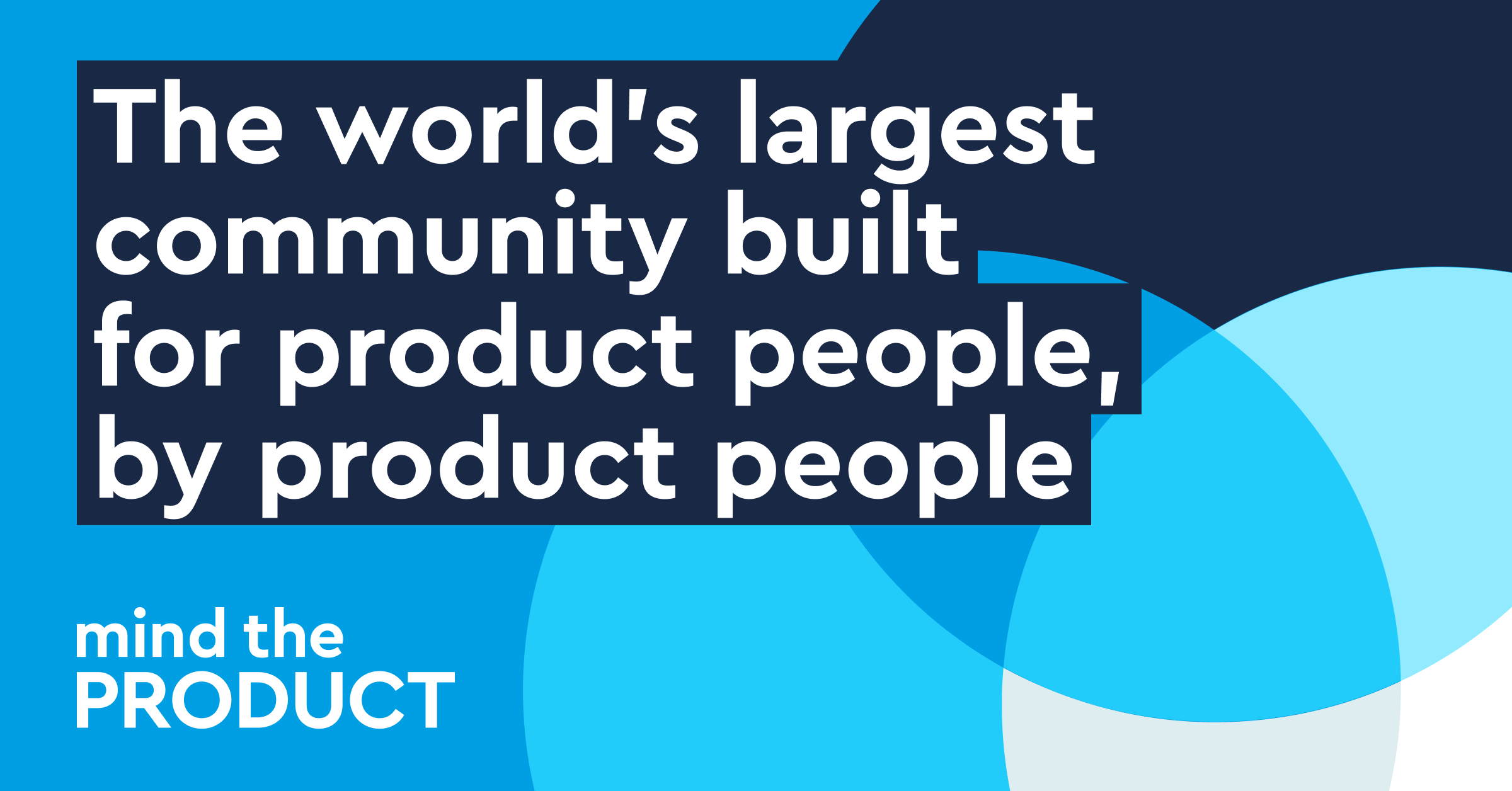How ‘business for good’ went bad—and what comes next
“Capitalism as we know it is dead.” Salesforce CEO Marc Benioff made that proclamation at the TechCrunch Disrupt conference in 2019. “We’re going to see a new kind of capitalism,” he went on. “If your orientation is just about making money, I don’t think you’re going to hang out very long as a CEO or a founder of a company.” Benioff’s remarks were striking, but not shocking. He was merely articulating what had become the conventional wisdom among business leaders in that moment. After decades of serving shareholders alone, CEOs were embracing the idea that they should also be concerned about stakeholders—employees, customers, suppliers, local communities, and even the planet. This notion of “business for good” had become mainstream. Silicon Valley giants like Google and Facebook rose to power while touting their commitment to transforming the world for the better. Tesla became a trillion-dollar company while talking about saving the planet. Mission-driven startups like Toms, Warby Parker, and Bombas helped reshape the way people shop, giving away one product for every one sold, while high-profile startups like Uber and Airbnb insisted that they, too, were trying to do more than make money. (Airbnb says its mission is to “create a world where anyone can belong anywhere.”) Even big, established corporations embraced the idea that, in Benioff’s words, business could be “the greatest platform for change.” They launched diversity and inclusiveness initiatives and took steps to reduce their carbon footprint, vowing to be net carbon zero by 2030. “Doing well by doing good” was no longer just a niche concept. It was here to stay. Or so it seemed. Just a few years later, it’s stakeholder capitalism—not capitalism itself—that looks dead. Right-wing activist shareholders have bullied companies like Harley-Davidson, Caterpillar, and Lowe’s into rolling back their DEI initiatives. Investors claiming that so-called environmental, social, and governance (ESG) issues were fundamental to their investment choices have stopped talking about those issues entirely. CEOs who confidently issued pronouncements about social justice and the importance of fighting climate change have clammed up. When asked how he feels about this current moment, David Bronner, chief executive of natural soap purveyor Dr. Bronner’s—a 75-year-old conscious capitalism mainstay—says, “Sometimes I’m stoked and most times I’m not.” This reversal has been so fast and so dramatic that even many of the youngest mission-driven companies now look like relics of a bygone era, while the environment that spawned them feels like little more than a dream. But the movement that defined the past 15 years changed American business in meaningful ways that will survive the backlash. To understand how, and where it goes from here, it’s time to look at why it arose, what it accomplished (and failed to), why it came crashing down, and what’s left standing amid the rubble. The forces that led people to demand more from corporations, and that led corporations to demand more from themselves, haven’t vanished. Stakeholder capitalism may be ailing, but it isn’t dead. It’s taking a hard look at itself—and evolving. Klaus Schwab, founder of the World Economic Forum, may have been the first to coin “stakeholder capitalism,” in 1971. Patagonia founder Yvon Chouinard, Paul Newman, and Ben Cohen and Jerry Greenfield of Ben & Jerry’s proved it could work. But the business-for-good era that defined the early part of this century had an origin of its own. After the 2008 financial crisis, low interest rates and cheap capital fueled a boom in mission-driven startups. They were largely run by young entrepreneurs, geared toward a generation frustrated with big corporations and with a government that had bailed out the bankers and dragged its feet on climate change. Many of these startups were able to grow quickly thanks to the mobile technology suddenly in everyone’s pocket. Business was now the fastest route to change. [Illustration: Raymond Biesinger] A whole ecosystem to support these companies sprang up, with nonprofits like Fair Trade USA and B Lab auditing companies’ business practices to certify them to consumers. Social entrepreneurship programs at business schools boomed, as did the number of B Lab’s Certified B Corporations, which rose twelvefold between 2010 and 2022. Then something interesting happened: The biggest corporations and investment firms in America joined in, largely because their employees wanted them to, and the low unemployment and tight labor markets of the second half of the 2010s forced them to comply. As Jonas Kron, chief advocacy officer of Trillium Asset Management, one of the earliest socially responsible investment firms, says: “When government steps back, it doesn’t do away with the concerns that people have. People saw the enormous power that corporations represented and said, if that is where the power is, that is

“Capitalism as we know it is dead.”
Salesforce CEO Marc Benioff made that proclamation at the TechCrunch Disrupt conference in 2019. “We’re going to see a new kind of capitalism,” he went on.
“If your orientation is just about making money, I don’t think you’re going to hang out very long as a CEO or a founder of a company.”
Benioff’s remarks were striking, but not shocking. He was merely articulating what had become the conventional wisdom among business leaders in that moment. After decades of serving shareholders alone, CEOs were embracing the idea that they should also be concerned about stakeholders—employees, customers, suppliers, local communities, and even the planet.
This notion of “business for good” had become mainstream. Silicon Valley giants like Google and Facebook rose to power while touting their commitment to transforming the world for the better. Tesla became a trillion-dollar company while talking about saving the planet. Mission-driven startups like Toms, Warby Parker, and Bombas helped reshape the way people shop, giving away one product for every one sold, while high-profile startups like Uber and Airbnb insisted that they, too, were trying to do more than make money. (Airbnb says its mission is to “create a world where anyone can belong anywhere.”) Even big, established corporations embraced the idea that, in Benioff’s words, business could be “the greatest platform for change.” They launched diversity and inclusiveness initiatives and took steps to reduce their carbon footprint, vowing to be net carbon zero by 2030. “Doing well by doing good” was no longer just a niche concept. It was here to stay.
Or so it seemed. Just a few years later, it’s stakeholder capitalism—not capitalism itself—that looks dead. Right-wing activist shareholders have bullied companies like Harley-Davidson, Caterpillar, and Lowe’s into rolling back their DEI initiatives. Investors claiming that so-called environmental, social, and governance (ESG) issues were fundamental to their investment choices have stopped talking about those issues entirely. CEOs who confidently issued pronouncements about social justice and the importance of fighting climate change have clammed up. When asked how he feels about this current moment, David Bronner, chief executive of natural soap purveyor Dr. Bronner’s—a 75-year-old conscious capitalism mainstay—says, “Sometimes I’m stoked and most times I’m not.”
This reversal has been so fast and so dramatic that even many of the youngest mission-driven companies now look like relics of a bygone era, while the environment that spawned them feels like little more than a dream. But the movement that defined the past 15 years changed American business in meaningful ways that will survive the backlash.
To understand how, and where it goes from here, it’s time to look at why it arose, what it accomplished (and failed to), why it came crashing down, and what’s left standing amid the rubble. The forces that led people to demand more from corporations, and that led corporations to demand more from themselves, haven’t vanished. Stakeholder capitalism may be ailing, but it isn’t dead. It’s taking a hard look at itself—and evolving.
Klaus Schwab, founder of the World Economic Forum, may have been the first to coin “stakeholder capitalism,” in 1971. Patagonia founder Yvon Chouinard, Paul Newman, and Ben Cohen and Jerry Greenfield of Ben & Jerry’s proved it could work. But the business-for-good era that defined the early part of this century had an origin of its own.
After the 2008 financial crisis, low interest rates and cheap capital fueled a boom in mission-driven startups. They were largely run by young entrepreneurs, geared toward a generation frustrated with big corporations and with a government that had bailed out the bankers and dragged its feet on climate change. Many of these startups were able to grow quickly thanks to the mobile technology suddenly in everyone’s pocket. Business was now the fastest route to change.

A whole ecosystem to support these companies sprang up, with nonprofits like Fair Trade USA and B Lab auditing companies’ business practices to certify them to consumers. Social entrepreneurship programs at business schools boomed, as did the number of B Lab’s Certified B Corporations, which rose twelvefold between 2010 and 2022.
Then something interesting happened: The biggest corporations and investment firms in America joined in, largely because their employees wanted them to, and the low unemployment and tight labor markets of the second half of the 2010s forced them to comply. As Jonas Kron, chief advocacy officer of Trillium Asset Management, one of the earliest socially responsible investment firms, says: “When government steps back, it doesn’t do away with the concerns that people have. People saw the enormous power that corporations represented and said, if that is where the power is, that is where I’m going to go to achieve my values.”
Big corporations changed their policies to embrace diversity and sustainability and began taking vocal public positions on political issues, something they had typically shied away from for fear of alienating customers. Companies pressured North Carolina over the anti-transgender “bathroom bill” and Georgia over a voter-ID bill. They opposed Donald Trump’s Muslim ban. CEOs who hesitated to speak up often paid a reputational price: When Disney’s then-CEO Bob Chapek stayed silent about Florida’s Parental Rights in Education bill (better known as the Don’t Say Gay bill), he was lambasted by employees until he apologized and the company announced it was formally opposing the bill.
The moment it became clear that stakeholder capitalism had fully taken hold was when the Business Roundtable, a group of some of the most powerful corporations in America, issued a Statement on the Purpose of a Corporation in 2019 declaring that companies must commit themselves to “delivering value” to all stakeholders. “We thought this was going to be this big reckoning, this watershed moment where everything changes,” says Marcus Collins, former head of strategy at Wieden+Kennedy and an assistant professor of marketing at the University of Michigan. “People put on a good show. We had some really good thespians in the C-suite that projected a convincing sincerity. It felt like it was real. But the minute that they faced some discomfort, they bailed.”
That discomfort started in the early 2020s, when inflation and interest rates rose, meaning that cheap capital was no longer easy to come by, slowing investment in idealistic upstarts and labor-intensive capital projects alike. High oil prices created by the sanctions imposed on Russia after its invasion of Ukraine led companies to start speaking up about “energy security” rather than moving away from fossil fuels. In 2022, large-scale layoffs pummeled the tech industry, and the S&P 500 tumbled nearly 20%. By 2023, both Google and Meta had begun to scale back their diversity, equity, and inclusion programs. When the stock price is falling, suddenly shareholders become the only stakeholders CEOs can hear.
There had been “a faddish element about the whole thing,” says Ravi Dhar, a professor at Yale’s School of Management. “You had CEOs going to Davos and making a statement about being net zero by 2050, without any real idea of how to do that, and without really asking, ‘If we want to accomplish this, what should we be doing differently?’ It was just words on a page,” he adds.
As Rose Marcario, former CEO of Patagonia, puts it, “If you never authentically stood for responsible supply chains or diversity and inclusion, no big surprise you drop it at the first sign of tension.”
Nowhere was this truer than in Wall Street’s embrace of environmental, social, and governance investing. ESG-themed funds had ballooned from less than $50 billion in global assets in 2018 to more than $400 billion by 2022. But in 2023, the wind shifted. ESG investments in the U.S. have since suffered 10 consecutive quarters of declines, reflecting the fact that a lot of ESG investing was mostly a matter of marketing. While some investment firms, like Trillium, practiced socially responsible investing by combining fundamental analysis with shareholder advocacy, lots of ESG “investments” were little more than conventional mutual funds and exchange-traded funds (ETFs) sold under a new name. The arguments that firms made for ESG were often confused and confusing.
“Were you trying to make the world a better place with your investments, or were you trying to just divest from businesses you didn’t want to be in—which doesn’t really change anything—or were you trying to improve returns?” asks Tariq Fancy, formerly the chief investment officer for sustainable investing at BlackRock. Under CEO Larry Fink, BlackRock, the country’s largest investment firm, had been the highest-profile and loudest advocate for ESG. Fancy has since become one of the fiercest critics of the ESG movement.
Not all of these initiatives were cynical exercises in marketing. As Fancy says, “Maybe the issue wasn’t greenwashing so much as greenwishing. But even so, ESG was not seriously trying to answer the problem it was trying to solve. It was offering virtue at a low cost.” Or, as he puts it more bluntly, “My read of Larry Fink is that he will do absolutely everything in his capacity to solve climate change, as long as it doesn’t cost him a cent.” (Fink didn’t respond to Fast Company’s request for an interview.)
Plenty of CEOs felt the same way. In its original incarnation, stakeholderism was fundamentally about organizing a company’s entire business around social responsibility, doing what was possible to ensure that, in the words of David Bronner, “your operations are as ethical and sustainable as they can be.” But the way corporate stakeholderism manifested itself from 2019 to 2022 often was less about operational transformations than public statements and grandiose commitments. These pronouncements, usually about the environment and diversity, increasingly clashed with the rhetoric of the ascendant GOP. And there were consequences.
The decline of stakeholder capitalism and the political resurrection of Donald Trump happened at the same time and for similar reasons: anger at what many Americans perceived as virtue-signaling liberal elitism, despair about the basic cost of living, and distrust of global corporations. Influencers channeled that anger into consumer campaigns against companies that seemed too “woke.”

The signal example of this was the boycott of Bud Light over a social media marketing collaboration with trans influencer Dylan Mulvaney in 2023. Bud Light’s second-quarter sales fell by 10%, year over year, and it lost its place as the best-selling beer in the U.S. market. As the University of Michigan’s Collins points out, Bud Light had a long history of championing LGBTQ+ rights and could have made the case that the campaign was squarely in line with its brand history. Instead, it ran for the hills, which delighted its critics and alienated its putative friends.
That strengthened the hand of red-state politicians who were already busy turning DEI and ESG into epithets and used state power to roll back what came to be called “woke capitalism.” In response to Disney’s criticism of the Don’t Say Gay bill, the Florida Legislature revoked Disney’s ability to operate as a quasi-independent government around its theme parks, which had given it tax advantages. Texas passed a law prohibiting state pension funds from investing in any of 350 mutual funds that “boycotted fossil fuels.” Other red states pulled their money from BlackRock in protest of its ESG commitments, while legislators in New Hampshire tried to make the use of ESG criteria for state investments an actual crime.
Emboldened, right-wing activist Robby Starbuck leveraged social media to get Harley-Davidson, Tractor Supply Co., John Deere, and Jack Daniel’s to drop their DEI policies. Vivek Ramaswamy, who had started a hedge fund called Strive to use shareholder activism against “woke” companies, ran for the Republican nomination for president. DEI and ESG were no longer seen by default as win-win for a company; the calculus had abruptly shifted. “Robby Starbuck is now a stakeholder,” says Allan Murray, former editor of Fortune and author of Tomorrow’s Capitalist: My Search for the Soul of Business. “CEOs have to take his interests into account.”
The impact of the backlash was impossible to miss. Nike made deep cuts to the sustainability team that was supposed to help double business while halving its carbon footprint. Companies like Nestlé and Coca-Cola “kicked the plastic can down the road (again),” as The Wall Street Journal put it, after missing the plastic-reduction goals they’d set. Boeing dismantled its global DEI department, and IBM cited “inherent tensions in practicing inclusion.” JPMorgan’s Jamie Dimon warned employees that some of the company’s DEI costs were for “stupid shit” and vowed to cut them. The world’s largest HR professionals society, SHRM, announced that the E was being dropped from DEI, while reassuring everyone that its commitment to the cause nevertheless remained “steadfast.”
If talking about reducing emissions and DEI had felt downright obligatory in 2021, by 2024 it had become a liability.
When a bubble bursts, it feels at first as if it had consisted of little more than overhyped promises, peddled by hucksters and embraced by trend followers. In the case of stakeholderism, critics on the right have brushed it off as a woke orgy of virtue signaling, while critics on the left have painted it as one big exercise in greenwashing, built on the fantasy that it’s possible to get businesses to care about anything other than profit.
But the bursting of a bubble also winnows out the weak and the fake, ultimately making it easier to see what’s of real value. “It would be disingenuous to say that this moment doesn’t create some angst that we’re going backward,” says Bombas CEO Dave Heath, referring to the popping of what’s been called the “Sustaina-bubble.” “But we’re lucky we get to set our rules. We can stay focused on the long term. The pendulum swings back and forth.”
It does. The forces that helped spark the boom in stakeholder capitalism—climate change, a socially engaged workforce, educated consumers—remain powerful. Dozens of credible studies in recent years have made it clear that there’s a strong business case for things like treating your employees well and focusing on the efficient use of energy and emissions reductions. Often, there is no conflict between serving the interests of stakeholders and the long-term interest of shareholders.
Some business leaders, of course, will never see things that way. There are undoubtedly many companies that, having dabbled in stakeholderism, are now happy to be free of it. For others, diversity and sustainability were always an odd fit, given their brand and customer base, and they never really figured out how to make them a genuine part of their operations. As Tractor Supply CEO Hal Lawton said during a quarterly earnings call following the rollback of the company’s DEI and carbon emissions goals in July 2024, removing “the perceived political and social agendas from our policies” had no “measurable impact on our business.”
Others are likely to take a middle path. They’ll roll back their DEI programs—as Google, Walmart, and Amazon have in the wake of Trump’s election—and talk less about their environmental efforts (which some call “greenhushing”). “Companies are keeping their heads down,” says Martin Whittaker, CEO of Just Capital, a nonprofit that compiles an annual scorecard of corporate stakeholder performance. “They don’t want to be called out. They don’t want to attract undue attention.” But that doesn’t mean they’re giving up on sustainability. In fact, plenty of big companies—including those with massive carbon footprints, like ExxonMobil—are spending billions to reduce emissions and become more efficient.
A few corporate giants are simply resisting the backlash, like Costco and Levi Strauss & Co. have. (Shareholders of both companies overwhelmingly voted down anti-DEI shareholder resolutions this year.) And then there are the mission-driven companies and organizations that gave rise to the stakeholder movement in the first place. They may be emerging from the storm even stronger. [carousel_block id=”carousel-1749174435420″]
Take B Lab, for example. The nonprofit faced criticism in 2022 for certifying multinational companies with messy supply chains, like Nespresso. Dr. Bronner’s famously dropped its certification earlier this year, explaining that the entire B Corporation designation had become “compromised.” Yet the number of companies certified as B Corporations has more than doubled in the past three years, and B Lab recently issued new, tougher standards. Even David Bronner is encouraged: “We do appreciate the real improvement,” he says, adding that B Lab “upleveled in a lot of ways. There’s now minimum criteria within each of the areas so you can’t just run up your score in a few and flail in others.” (He describes being “in this iterative process” with B Lab but says that the company has no plans to get recertified.)
Meanwhile, Sarah Paiji Yoo, CEO of eco-friendly cleaning products brand Blueland, says that her company’s revenues have grown faster than ever over the past two years—by more than 40% in 2024 and even more in 2025—and “it’s not that we’re spending more money to grow. We are growing faster and becoming more profitable.”
The main issue for many conscious capitalism companies, in fact, is the backlash itself. Ben & Jerry’s recently sued its parent company, Unilever, over the removal of the ice cream purveyor’s CEO. The chief executive, a veteran of the brand, had spoken out about support for Palestinian rights, including the brand’s decision to quit selling ice cream in Israeli-occupied territories. Jay Curley, chief marketing officer for Ben & Jerry’s, says that right now “the challenge is how to manage all the chaos that is being created by the attempt to roll back a lot of progress that we’ve made over the years. It’s more about how we manage through that than thinking, Oh, do we stop doing what we’re doing? Because that’s never on the table.” [carousel_block id=”carousel-1749182439336″]
It’s easy to understand why truly mission-driven companies are undeterred. Many are privately owned, with investors committed to their sustainable or societal goals. Some, like Warby Parker, King Arthur Flour, and Bluesky, are public companies that are set up as public benefit corporations, which means that working toward their mission is part of their corporate charter. “It’s hard when public-company structures are committed to shareholder primacy and quarterly returns,” says Vincent Stanley, the director of philosophy at Patagonia. “It’s hard to advance long-term social and environmental goals when you have to maximize the profits every quarter.” Most mission-driven companies don’t have to do that. They also don’t have to worry about Robby Starbuck going after them, because their customers don’t care what Robby Starbuck thinks.
These kinds of companies have also typically built their value chains with stakeholders in mind. Their commitments to sustainability, diversity, their local communities, and more weren’t bolted on after the fact. The most successful of them function as what Paul Rice, the founder and former CEO of Fair Trade USA, calls “lighthouse brands,” models that other companies can look to for lessons in how to blend profit and purpose.
Take, for example, a B Corporation and Fair Trade USA-certified company called NatureSweet, which is the largest producer of snacking tomatoes in the U.S. (They come in a container that looks kind of like a volcano.) NatureSweet’s reason to exist, according to CEO Rodolfo Spielmann, is to “transform the lives of agricultural workers in North America.”
The company has done that, in part, by paying its workers 49% more, on average, than the standard industry wage. Most of these workers are unionized, but the company is still able to use a compensation structure in which most of the pay comes in the form of weekly bonuses pegged to productivity. The higher pay raises NatureSweet’s costs, but it also makes the company’s employees more loyal, radically reducing turnover. NatureSweet says its turnover is less than 1% a month in an industry where that number can top 200% per year.
Lower turnover also means the company’s employees are more experienced—the average employee has worked for NatureSweet for seven years—and therefore more productive. “They’re incredibly good at their jobs,” Spielmann says. NatureSweet uses 40% fewer workers per hectare than the industry average, the company says, and it has posted double-digit growth since 2020, to “well over” $500 million in sales. That’s far short of behemoths like Fresh Del Monte at $4.3 billion and Dole at $8.5 billion, but NatureSweet grows only tomatoes, cucumbers, and peppers, and Dole recently admitted that its fresh produce sales aren’t so great. It reported a $32 million quarterly loss in February, largely because of the fresh vegetable division.
Blueland, similarly, has translated its commitment to sustainability into greater efficiency, saying it benefits from a 20% reduction in shipping costs and waste because its products are solid cleaning concentrates. “Dry products that are a fraction of the size of conventional equivalents mean lower cost to ship across the country and less warehouse space per product,” says Paiji Yoo. “From an operations perspective, I’ve seen firsthand how we’ve been able to expand margins: less packaging, shipping fewer things around, not air-freighting—things that are both better for the planet but also better for the bottom line.”
That all fits with how Stanley describes Patagonia, which does more than a billion dollars in annual revenue while still being the platonic ideal of a mission-driven company. “The success of the business derives from the constraints we impose on ourselves,” he says. “If you have social and environmental constraints, you have to think about alternatives, and that requirement allows you to come up with efficient answers you might otherwise not have.” It’s not just doing well while doing good. In some sense, it’s doing well because you’re doing good.
When business leaders and economists talk about stakeholder capitalism, there’s often one stakeholder who goes unmentioned: the consumer. Business for good is a supply-side movement: Its focus has been on changing businesses to be more inclusive, more sustainable, more committed to doing good. What has gotten much less attention is the demand side—that is, what consumers actually want, what they’re willing to pay for, and how much they’re willing to pay for it. And that’s important, because, as the University of Michigan’s Collins puts it, “Capitalism will always bend toward consumption. Where the demand is, that’s where capitalism will lean.” And right now, the demand for sustainable or mission-driven products is still niche.
It’s true that the market for sustainable products has expanded enormously over the past 15 years. Organic food products now account for almost $70 billion a year in sales. The segment of affluent, highly educated consumers who are willing to pay a premium for sustainable products continues to grow. The challenge is that in the grand scheme of things, the number of consumers who are actually making purchasing decisions for ethical reasons is still quite small. Organic food purchases, for instance, account for less than 10% of all grocery-store sales.

If that’s surprising, it may be because the past decade saw mountains of survey data claiming that most consumers not only cared about things like sustainability but also were willing to pay a healthy premium for products that aligned with their values. In a 2024 PwC survey, for example, more than 80% of consumers said they were willing to pay 9.7% more for “sustainably produced or sourced goods.” In polls of younger consumers, the premium was even higher. Companies could point to this data as evidence that investing in sustainability wasn’t just good for the planet, it was good for business.
The problem with these studies? Almost all of them looked at what consumers said, not what they did. And when it comes to consumer behavior, there is very often what economists call a “say-do gap.”
“Companies were misled by consulting companies saying things like millennials and Gen Z are willing to pay a 50% premium [for sustainable products],” Yale’s Dhar says. “Those studies focused on reported behavior, and companies that acted on them found that the reported behavior never materialized.”
A 2022 Boston Consulting Group study illustrated this point: It found that while 80% of consumers said they thought about sustainability when making day-to-day purchases, only 1% to 7% were actually paying a premium for sustainable products and services. Similarly, last year researchers from the University of Chicago’s Booth School of Business and New York University gave 24,000 consumers information about various companies’ ESG commitments, then tracked their spending habits. They found that even though most of the consumers said they had a moderate preference for buying from “ESG-responsible” companies, the added information had only a tiny impact on their actual buying habits—they increased purchases of sustainable products by 1.2% in the first two weeks, and by week four, the effect had totally dissipated.
The sobering thing, says Collins, is that climate change doesn’t matter to most people at the point of purchase. “The time horizon is so far off that people go, ‘Ah, I’ll worry about that when I worry about that.’ ”
When Just Capital surveyed people in 2024 about what they care about most when it comes to corporate behavior, a company’s adherence to its climate commitments accounted for just 2.5% of the overall score. “Most people are struggling financially,” Whittaker says, “and most people put food on the table and a roof over their head ahead of [thinking about] climate change.” It’s not that values are irrelevant to consumers, but price and quality are always going to matter more when people go shopping, and it was always a pipe dream to think otherwise.
This is the reality throughout the economy, all over the country. Lately, it’s been front-page news. Most Americans say they want to buy products made in the U.S., but what they do is buy cheaper products made abroad. And Trump’s tariffs—which are supposedly designed to bring manufacturing back to the U.S.—are unpopular for a pretty simple reason: Americans don’t want to pay more for T-shirts and bananas.
If you’re looking for more conscious, inclusive capitalism, then, you can’t expect consumers to fund it. Instead, the only way forward is to do what companies like NatureSweet and Blueland are already doing: Use the constraints imposed by a commitment to sustainability to become more efficient and offer products at a price that consumers are willing to pay. That’s very hard, but it can be done, and not just on a small scale.
Walmart, for instance, is not normally thought of as a “business for good” company. It rolled back its diversity programs last year, putting U.S. CEO John Furner on the morning news shows to say, “Like many companies all across the U.S., we’ve been on a journey and we continue to be on a journey.” But Walmart has also reduced its emissions from operations by 20% in the past decade and cut a gigaton of emissions out of its supply chain, without any obvious impact on prices. Patagonia’s products, meanwhile, are expensive, but not necessarily pricier than products of similar quality. And Dr. Bronner’s runs a sustainable supply chain, relies on farms that practice regenerative agriculture, and pays everyone involved a living wage. And even with all that, David Bronner says, “We’re delivering our soaps at a very competitive price point in the mass market. You can do this.” Consumers aren’t going to solve these problems. Business will have to.
—With reporting by Clint Rainey















































































































































